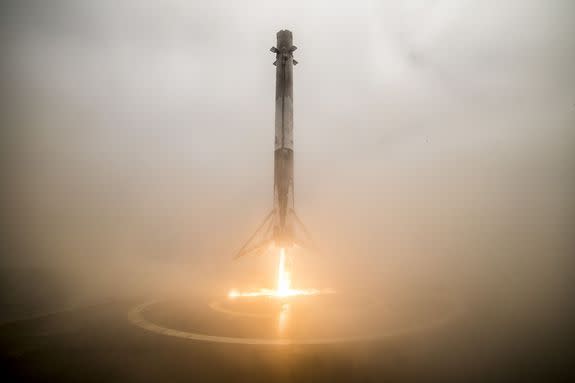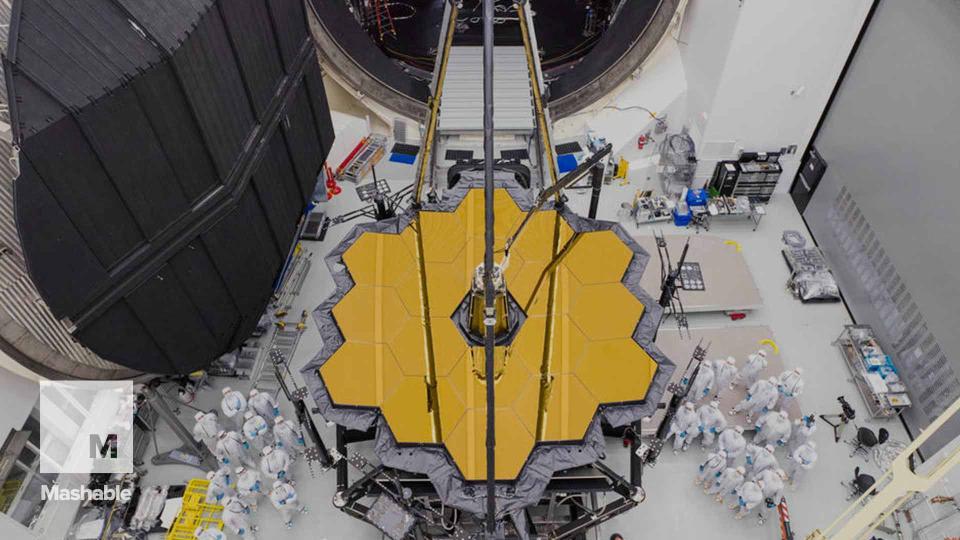The SpaceX Falcon Heavy launch is happening today: Watch it here

UPDATE: Feb. 6, 2018, 1:44 p.m. EST SpaceX has set a new launch time of 3:45 p.m. ET for the first flight of its Falcon Heavy rocket. That is only 15 minutes before the end of SpaceX's launch window for the day, which closes at 4 p.m. ET. Winds are still an issue, however, so there's still a chance they'll call off the launch attempt for the day and try again tomorrow.
UPDATE: Feb. 6, 2018, 12:58 p.m. EST SpaceX is now planning to launch at 3:05 p.m. ET because of those pesky upper-level winds.
UPDATE: Feb. 6, 2018, 12:09 p.m. EST SpaceX has pushed the expected launch time of its Falcon Heavy rocket back to 2:50 p.m. ET due to concerns over wind conditions in the area. SpaceX has until 4 p.m. ET to get the rocket off the ground for its maiden voyage Tuesday.
SpaceX now targeting 2:50 p.m. ET for #FalconHeavy launch; additional time allows teams to monitor winds https://t.co/QJk0r6nfgv
— Space Team (@SpaceTeam) February 6, 2018
UPDATE: Feb. 6, 2018, 10:48 a.m. EST Good morning! It's launch day here in Cape Canaveral, Florida, and things are looking good ahead of launch. If all goes according to plan, the Falcon Heavy should take flight at 1:30 p.m. ET. Watch it live in the window above, and get ready for some high-flying rocket action. -Miriam Kramer
SpaceX is set to blast its ambitious, 27-engine Falcon Heavy rocket into space on Tuesday, Feb. 6. If the launch is successful, the Falcon Heavy will become the most powerful rocket currently operating on (and off) Earth.
You can watch the launch from the stream embedded above. Read on for what else you need to know:
SEE ALSO: Here's how SpaceX's Falcon Heavy rocket stacks up to the competition
How and when to watch the launch:
SpaceX webcasts all of its rocket launches and the Falcon Heavy is no exception. The launch is set for 1:30 p.m. EST, although SpaceX has a possible launch window lasting until 4:00 p.m.
This inaugural Falcon Heavy launch is considered a demonstration test, so it's certainly possible that as SpaceX works out any bugs the rocket will not launch promptly at 1:30 p.m. If SpaceX decides not to launch the rocket by 4:00 p.m., due to either technical or weather issues, they'll try again the following day.
What is the Falcon Heavy and where's it going?
The Falcon Heavy is SpaceX's biggest and most powerful rocket to date. SpaceX has made countless headlines in the past couple years by successfully launching both satellites and International Space Station cargo into space using its Falcon 9 rocket. Now, SpaceX is testing a beefed-up version of the Falcon 9, which is basically three Falcon 9 rockets strapped together (for a total of 27 engines).
Bigger rockets can carry larger spacecraft and heavier cargo, which will be necessary for more intense space missions — notably to the moon and Mars.
For this test flight, SpaceX's test cargo is – stunningly – a "midnight cherry"-colored Tesla Roadster. SpaceX CEO Elon Musk noted that rocket tests usually carry along "boring" cargo to simulate weight — but Musk is clearly not interested in the notion of boring:
A post shared by Elon Musk (@elonmusk) on Dec 22, 2017 at 10:47am PST
If all goes as planned, the Falcon Heavy will launch the roadster into an orbit that will bring it near Mars and allow it to drift out there in our solar system for eons.
Payload will be my midnight cherry Tesla Roadster playing Space Oddity. Destination is Mars orbit. Will be in deep space for a billion years or so if it doesn’t blow up on ascent.
— Elon Musk (@elonmusk) December 2, 2017
What to expect during the launch?
SpaceX launch broadcasts typically begin 10 to 15 minutes before the launch. A SpaceX broadcaster will announce the launch details before letting viewers listen to the final countdown. Launch updates will continue throughout the rocket's flight.
Each launch is a little different, but a couple minutes after liftoff the rocket will reach outer space, so the camera will shift to a view of the rocket's "second stage," which is basically an engine thrusting the rocket's payload (in this case a Tesla Roadster) deeper into space.
If the rocket successfully passes certain milestones, you'll be able to hear the SpaceX control room cheering in the background of the broadcast.
How to watch for the triple booster landing:
SpaceX will attempt an unprecedented landing feat after the rocket leaves Earth. After the Falcon Heavy's three rocket boosters lift the SpaceX cargo into space, the boosters will turn around and start their long journeys back to Earth.
SpaceX plans to land two boosters on land and one on a drone ship in the Atlantic Ocean. Typically, SpaceX lands one rocket back on Earth — not three nearly simultaneously.

Image: spacex
In past SpaceX launches, these boosters typically land around 10 minutes after the launch. It'll be interesting to see how the spaceflight company broadcasts the triple-landing attempt.
Where is the launch happening?
The Falcon Heavy will launch from the historic NASA Kennedy Space Center, near Cape Canaveral, Florida.
SpaceX leases one of the Kennedy Space Center launch pads from NASA, specifically Launch Pad 39A, which NASA built for its Apollo space program. After NASA stopped sending Apollo spacecraft to the moon in 1972, Launchpad 39A was eventually used for space shuttle launches.

Image: NASA
What happens if the rocket blows up?
As Elon Musk said himself at a conference in 2017: "Every time you fire a rocket engine, there is a probability that something might go wrong."
This probability is increased when a powerful, new rocket is being tested for the first time — especially one with a whopping number of engines and massive amounts of fuel.
While any number of potential mishaps are possible, there is one important certainty: If the rocket does explode, it would be best if it blew up nowhere near NASA's launchpad:
"I hope it makes it far enough away from the pad so that it does not cause pad damage," Musk said noted. "I would consider even that a win to be honest."
WATCH: Here’s how NASA is preparing the largest telescope ever built for space


